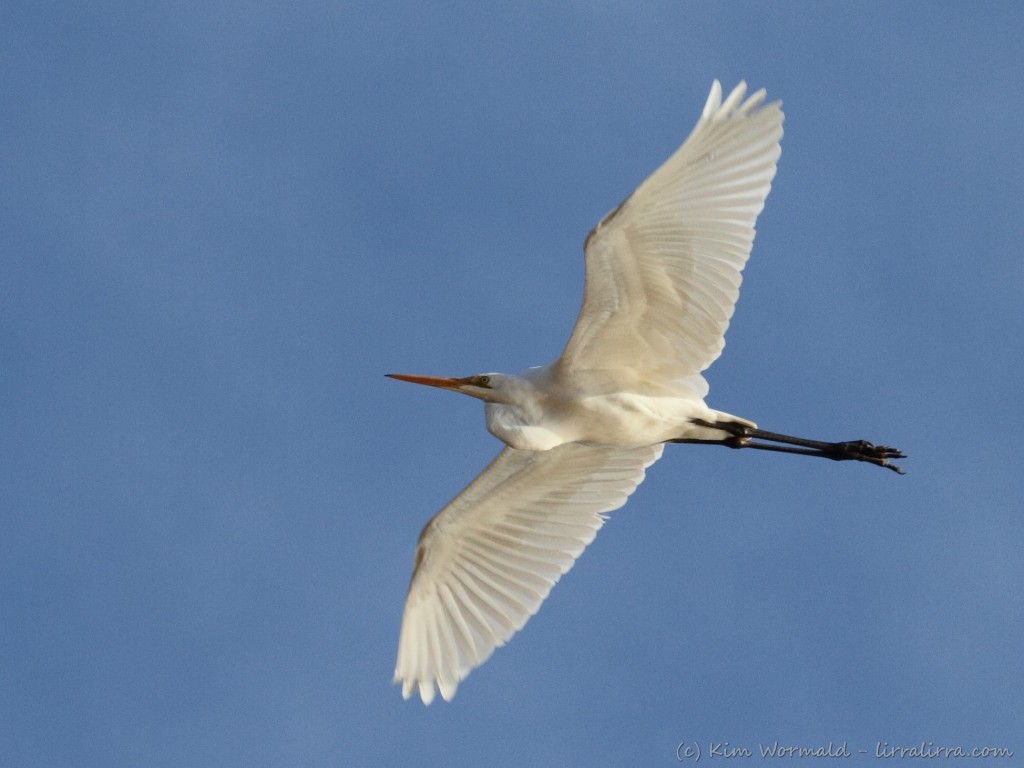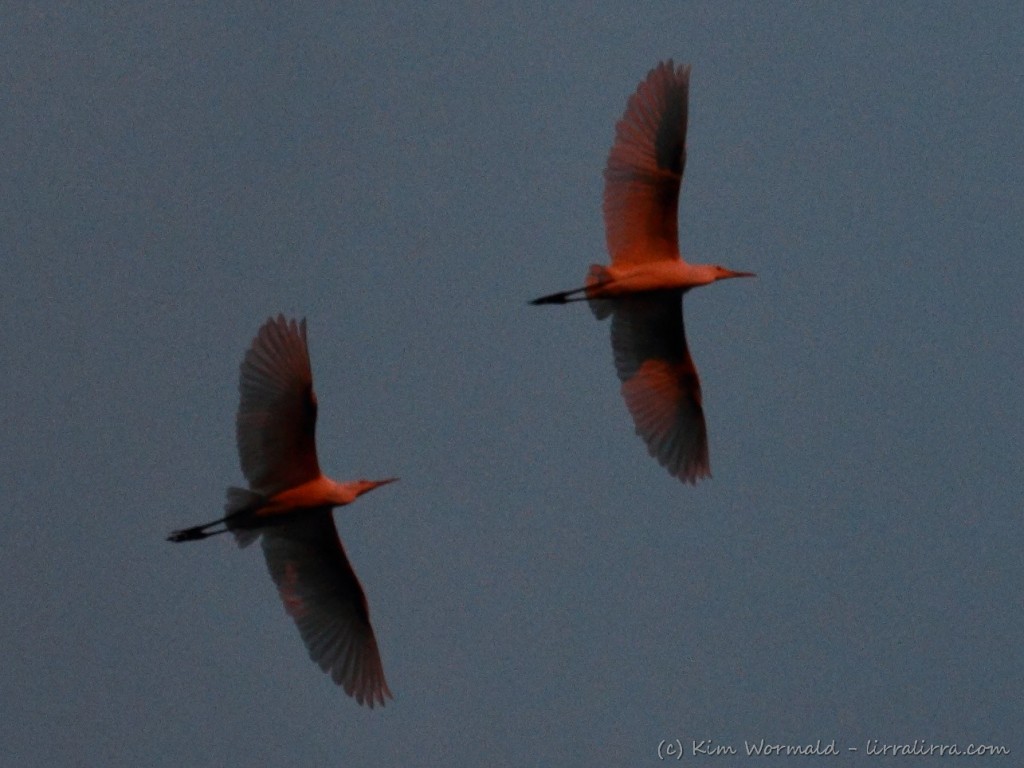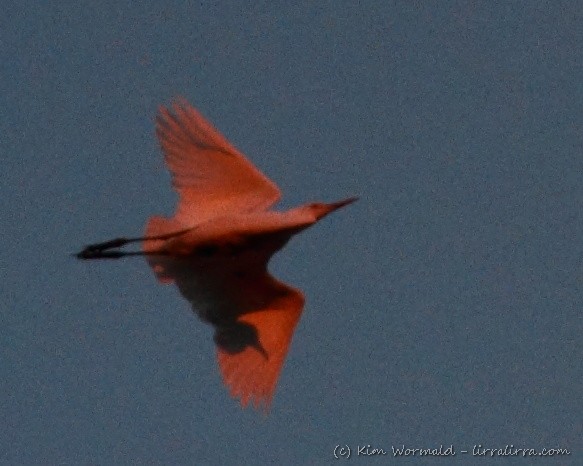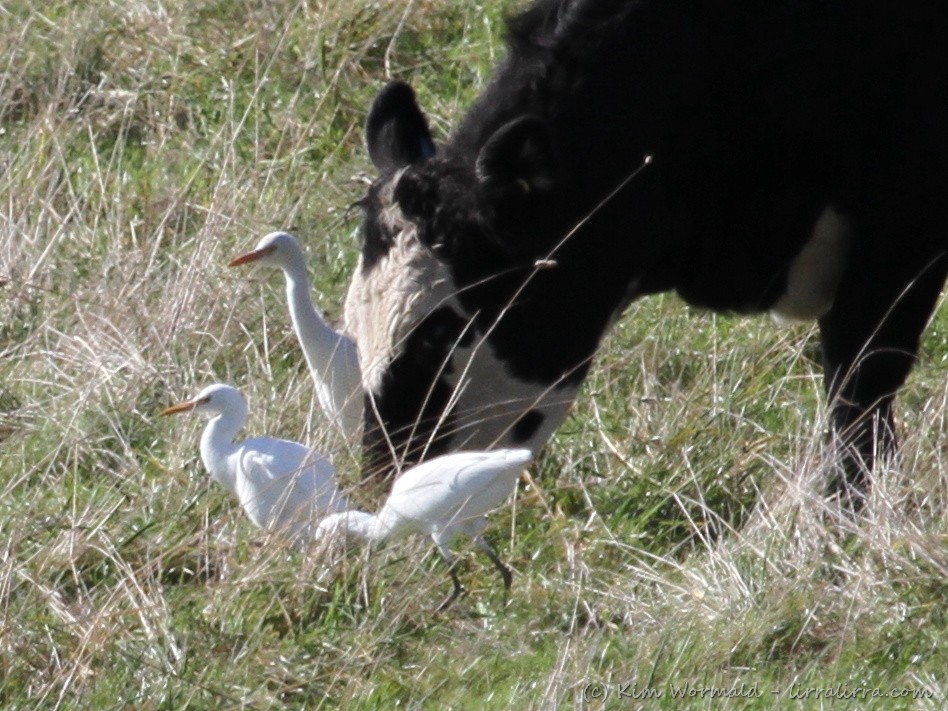The title may make it sound as though I’ve had too much whisky on my cornflakes; despite what I saw I do realise that Australia has four egret species and that all of them have snowy white plumage. They can be difficult to identify as it involves comparing the length of their necks and legs in relation to their bodies, and checking for a dark line that extends from the bill to behind the eye. The largest, the Eastern Great Egret, has long legs, a neck that is longer than its body and the dark eye line. This bird flew over my head while I was focused on the rockpools. Thanks to Glenn for hollering at me from the other end of the beach.
 Eastern Great Egret (Ardea modesta)
Eastern Great Egret (Ardea modesta)
Canon 7D, 100-400mm L IS USM, AE priority f/5.6, handheld, natural light
The dark line beneath the egret’s eye is visible and the dark tip at the end of its bill indicates a young bird. It’s hard to believe its neck is longer than its body when it looks like it belongs with a set of nuts and bolts. The Eastern Great Egret has a wingspan of about 1.7 metres. I particularly like the soft glow of the feathers in the early morning light.
And now to the pink egrets. The sun was setting in a sea of pink clouds as the earth’s shadow crept across the lake, tiptoed over the grasses and up to the tops of the trees where Cattle Egrets were circling ready to roost in the canopy of an old eucalypt. As they soared they flew out of the darkness of the earth’s shadow into the rays of sunshine. The photographs are grainy but eery and I find them interesting. I’d love to know what settings I should have used. I think I should have raised the ISO and I know I shouldn’t have had the exposure compensation set to the negative!
Cattle Egret (Ardea ibis) – flying sunsets, catching the last rays of sunlight as they soared.
Canon 7D, 100-400mm L IS USM, AE priority f/4.5, exposure compensation -1/3 (oh dear), handheld, natural light
Cattle Egret – the shadow of this bird’s head on its wing looks strange.
Cattle Egrets are more often seen in paddocks, sitting on the backs of stock animals or clustered around their heads. As cattle feed they disturb small creatures hidden in the grass: frogs, toads, lizards, mice and the egrets’ favourite, grasshoppers.
Cattle egret
Canon 7D, 100-400mm L IS USM, AE priority f/5.6, handheld, natural light
As I’m just setting out on this bird photography journey I would appreciate knowing what settings I should have tried for the sunset egrets, if you know and have a spare moment please let me know.
Happy birding, Kim




Leave a Comment